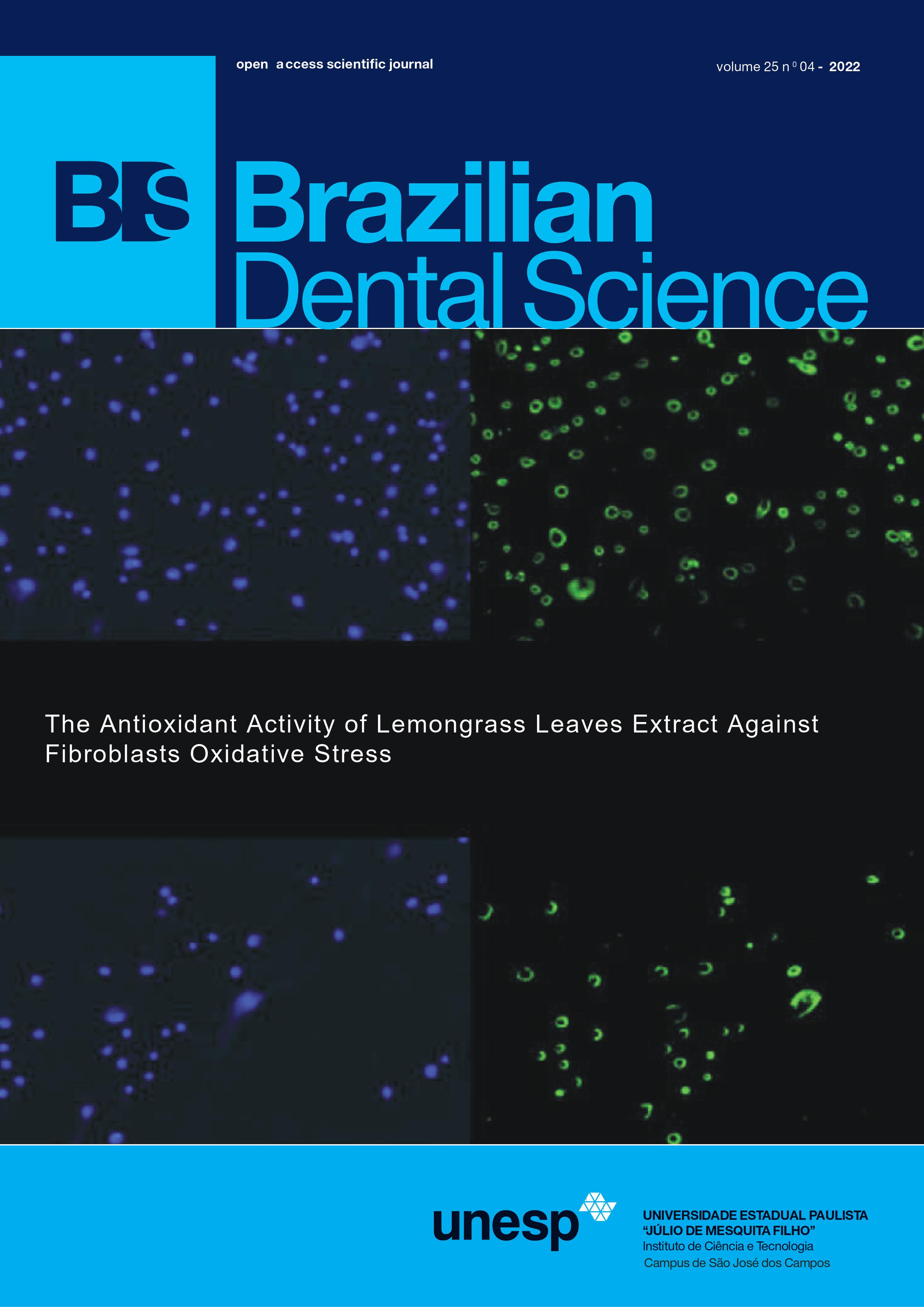Posterior rehabilitation using 3D-printed dental implants and synthetic regenerative membranes
DOI:
https://doi.org/10.4322/bds.2022.e3572Resumo
Aim: To describe through a clinical case report the surgical sequence of rehabilitation with 3D-printed implants
associated with maxillary sinus floor lift with synthetic regenerative materials, including biphasic bioceramic.
Case Report: Patient had an agenesis of the upper left premolars (#12 and #13), a vertical bone deficiency
caused by maxillary sinus’ pneumatization, and a horizontal alveolar resorption around the missing teeth area.
During the surgical procedures, incisions, detachment, and osteotomy were performed in the lateral region of
the maxillary sinus. The sinus membrane was detached and lifted 10 mm. Then, a thick poly(dioxanone)-based
synthetic resorbable membrane (Plenum) was inserted and adapted inside the sinus to protect the sinus membrane.
After the osteotomies with sub-instrumentation, 3D-printed implants (Plenum) were installed in the #12 area
(3.5mm x 11.5 mm; 30N) and #13 area (4.0mm x 10mm; 20N). The maxillary sinus was entirely filled with a
biphasic bioceramic,HA/B-TCP (70:30) 500-1000 um (Plenum) and covered by the same synthetic resorbable
membrane. Connective tissue graft from the palatal area was positioned internally to the flap and stabilized with
sutures to improve the vestibular tissue architecture. The entire surgical wound was sutured, and the tissues
stabilized. No complications occurred in the postoperative period. Conclusion: The use of synthetic regenerative
memberane and 3D-printed implants seems to be a promising option in areas of deficient bone remnants.
KEYWORDS
Dental Implants; 3D Printing; Maxillary Sinus; Sinus Floor Augmentations; Tissue Grafting.
Downloads
Downloads
Publicado
Como Citar
Edição
Seção
Licença
TRANSFERÊNCIA DE DIREITOS AUTORAIS E DECLARAÇÃO DE RESPONSABILIDADE
Toda a propriedade de direitos autorais do artigo "____________________________________________________________________" é transferido do autor(es) para a CIÊNCIA ODONTOLÓGICA BRASILEIRA, no caso do trabalho ser publicado. O artigo não foi publicado em outro lugar e não foi submetido simultaneamente para publicação em outra revista.
Vimos por meio deste, atestar que trabalho é original e não apresenta dados manipulados, fraude ou plágio. Fizemos contribuição científica significativa para o estudo e estamos cientes dos dados apresentados e de acordo com a versão final do artigo. Assumimos total responsabilidade pelos aspectos éticos do estudo.
Este texto deve ser impresso e assinado por todos os autores. A versão digitalizada deverá ser apresentada como arquivo suplementar durante o processo de submissão.




























